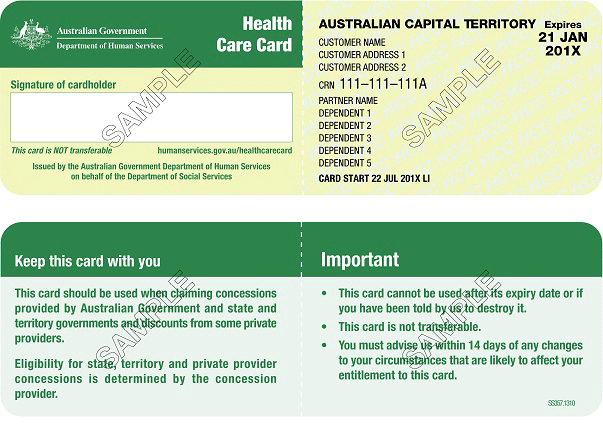 With recent changes to deeming rates and for some, a reduction in asset values or income levels, many people may now be eligible for the Low-Income Health Care Card.
With recent changes to deeming rates and for some, a reduction in asset values or income levels, many people may now be eligible for the Low-Income Health Care Card.
The Low Income Health Care Card (LIC) provides access to a range of concessions, including reduced cost medicines under the Pharmaceutical Benefits Scheme and many other benefits . Eligibility for the card is based on assessable income over an eight-week period, which sounds straight forward, however in practice there are a few tricks and traps that you need to be aware of.
The LIC entitles the cardholder, their partner and their dependent children access to reduced cost medicines under the Pharmaceutical Benefits Scheme. In addition, they may receive:
- bulk billing for doctor’s appointments, and
- refunds for medical expenses through the Medicare Safety Net.
Cardholders may also be entitled to various concessions from state and territory governments and local councils such as:
- reductions on energy bills,
- health-care costs, including ambulance, dental and eye care,
- public-transport costs, and
- rates
The only eligibility criteria is a residency test and an income test. There is neither an assets test nor minimum age requirement.
The LIC is issued for a 12-month period only. Clients need to re-apply and meet the income tests every 12 months to retain the card.
LIC INCOME TEST
When first applying for the LIC, eligibility is based on assessable income over the eight-week period before the date of claim. For members of a couple, the combined income of the couple is assessed. Assessable income includes:
- Salary or wages
- Business income
- Net rental income
- Deemed income on financial investments
- Deemed income on account based pensions
- Social security pensions or benefits (excluding Family Tax Benefit)
- Department of Veterans Affairs (DVA) pensions, Income Support Supplement and DFISA
- Parental leave pay and dad and partner pay
- Compensation payments
- Lump sum leave and redundancy payments.
QUALIFICATION INCOME TEST
To qualify for the LIC, assessable income for the eight week period ending on the date of claim must be below the following thresholds:
| Status | Weekly income | Income in an 8 week period |
| Single, no children | $571.00 | $4,568.00 |
| Couple combined, no children | $985.00 | $7,880.00 |
| Single, 1 dependent child | $985.00 | $7,880.00 |
| Couple combined, 1 child | $1019.00 | $8152.00 |
| For each extra child, add | $34.00 | $272.00 |
EXAMPLE
Trevor is single with no dependents. Trevor’s only source of income is part-time employment. In the eight weeks prior to claiming the card, he earns the following salary:
Per week Cumulative
Week 1 $500 $500
Week 2 $500 $1,000
Week 3 – $1,000
Week 4 – $1,000
Week 5 $800 $1,800
Week 6 $800 $2,600
Week 7 $1,000 $3,600
Week 8 – $3,600
Even though in some weeks his income exceeds $571, he is eligible for the LIC as his total income over the eight-week period prior to claim is less than $4,568.
RETENTION INCOME TEST
To retain the LIC, assessable income in any rolling eight-week period must be below 125% of the new claim income limits, as specified in the following table:
| Status | Weekly income | Income in an 8 week period |
| Single, no children | $713.75 | $5710.00 |
| Couple combined, no children | $1231.25 | $9,850.00 |
| Single, 1 dependent child | $1231.25 | $9,850.00 |
| Couple combined, 1 child | $1273.75 | $10,190.00 |
| For each extra dependent child, add | $42.50 | $340.00 |
Where you have a change in circumstances, you must advise Centrelink of the change within 14 days. Examples include an increase in assessable income or a child ceasing to qualify as a dependant.
